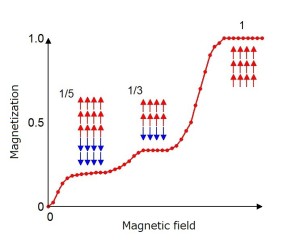There’s an almost euphoric tone to a June 16, 2015 Tufts University news release (also on EurekAlert) about research which has resulted in the ability to print silk-based inks,
Silk inks containing enzymes, antibiotics, antibodies, nanoparticles and growth factors could turn inkjet printing into a new, more effective tool for therapeutics, regenerative medicine and biosensing, according to new research led by Tufts University biomedical engineers and published June 16 [2015] in the journal Advanced Materials online in advance of print.
Until now, heat used in the inkjet printing process made using silk a challenge (as it does for cellulose nanomaterials used in 3D printers, noted in my June 17, 2015 posting), from the Tufts news release,
Inkjet printing is one of the most immediate and accessible forms of printing technology currently available, according to the researchers, and ink-jet printing of biomolecules has been previously proposed by scientists. However, the heat-sensitive nature of these unstable compounds means printed materials rapidly lose functionality, limiting their use.
Enter purified silk protein, or fibroin, which offers intrinsic strength and protective properties that make it well-suited for a range of biomedical and optoelectronic applications. This natural polymer is an ideal “cocoon” that can stabilize compounds such as enzymes, antibodies and growth factors while lending itself to many different mechanically robust formats, said Fiorenzo Omenetto, Ph.D., senior author on the paper and associate dean for research and Frank C. Doble Professor of Engineering at Tufts School of Engineering.
“We thought that if we were able to develop an inkjet-printable silk solution, we would have a universal building block to generate multiple functional printed formats that could lead to a wide variety of applications in which inks remain active over time,” he said.
By using this simple approach and starting with the same base material, the research team created and tested a “custom library” of inkjet-printable, functional silk inks doped with a variety of components:
- Bacterial-sensing polydiacetylenes (PDAs) printed on surgical gloves; the word “contaminated” printed on the glove changed from blue to red after exposure to E. coli
- Proteins that stimulate bone growth (BMP-2) printed on a plastic dish to test topographical control of directed tissue growth
- Sodium ampicillin printed on a bacterial culture to test the effectiveness of a topographical distribution of the antibiotic
- Gold nanoparticles printed on paper, for possible application in photonics and biology (e.g., color engineering, surface plasmon resonance based sensing and bio-imaging)
- Enzymes printed on paper to test the ability of the ink to entrain small functional biomolecules
The researchers, who included collaborators from the University of Illinois at Urbana-Champaign, foresee wide potential for future investigation and application of this technology.
For example, Omenetto envisions more work on the bio-sensing gloves, which he says could selectively react to different pathological agents. The ability to print antibiotics in topographical patterns could address the need for “smart” bandages, where therapeutics are incorporated and delivered to match a complex injury.
The published research was restricted to one ink cartridge, but the scientists believe it could extend to multi-cartridge printing combining complex functions.
…
Omenetto and Kaplan are pioneers in the use of silk as an alternative to plastics. Omenetto’s 2011 TED Talk called silk a “new old material” that could have a profound impact in many technical fields.
Here’s a link to and citation for the paper,
Inkjet Printing of Regenerated Silk Fibroin: From Printable Forms to Printable Functions by Hu Tao, Benedetto marelli, Miaomiao Yang, Bo An, Serdar Onses, John A. Rogers, David L. Kaplan, & Fiorenzo G. Omenetto. Advanced Materials DOI: 10.1002/adma.201501425 First published: 16 June 2015
This article is behind a paywall.


